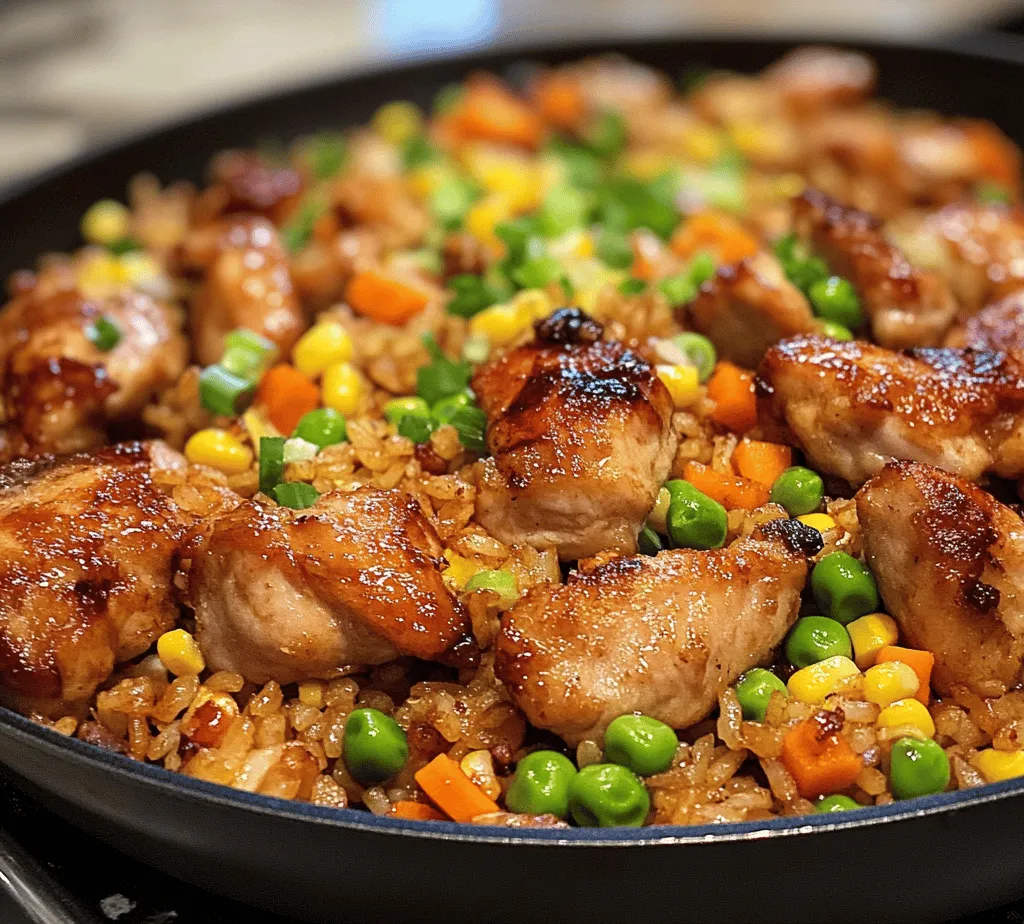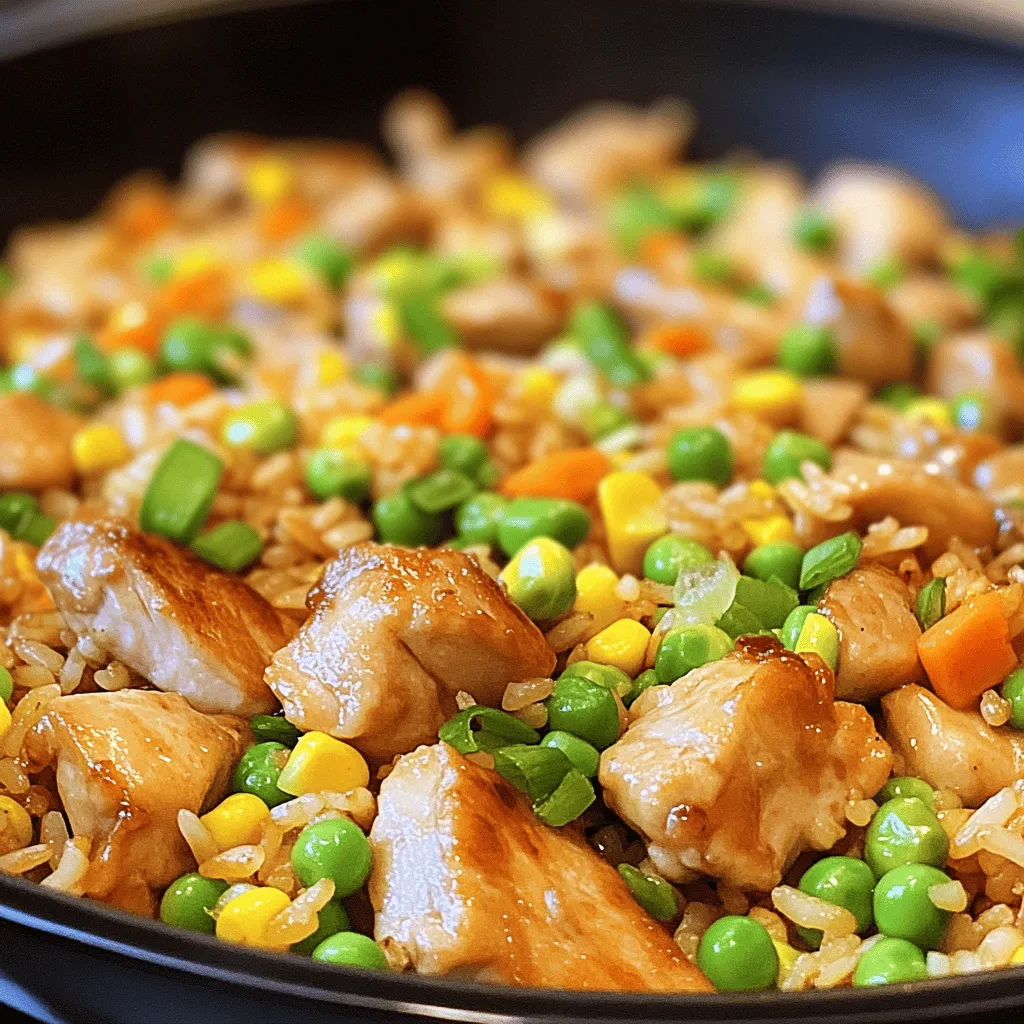Hibachi cooking brings the vibrant flavors of Japanese cuisine straight to your kitchen, allowing you to enjoy a delicious meal reminiscent of your favorite Japanese steakhouse. This article will guide you through creating a mouthwatering Hibachi Chicken with Fried Rice, a dish that balances savory, sweet, and umami flavors while being simple enough for any home cook to master. With fresh ingredients and straightforward techniques, you can whip up this delightful meal in just 30 minutes. Let’s explore the components of this recipe, the cooking process, and tips for achieving the best results.
Understanding Hibachi Cooking
The Tradition of Hibachi Cooking
The origins of hibachi cuisine can be traced back to traditional Japanese cooking methods that utilize a small, charcoal-fueled grill. The word “hibachi” translates to “fire bowl” in Japanese, and it refers to a cooking style that emphasizes grilling food over an open flame. Originally, hibachis were used for cooking meats and vegetables, creating a unique flavor profile that comes from the high heat and smoky essence of the charcoal.
In modern cooking, particularly in Western contexts, hibachi often refers to the theatrical style of cooking performed at Japanese steakhouses. Chefs demonstrate their skills by preparing meals right in front of diners on flat-top grills called teppanyaki. This engaging experience not only entertains guests but also highlights the freshness and quality of the ingredients used.
Common techniques used in hibachi cooking include quick searing, stir-frying, and the incorporation of aromatic seasonings. The high temperatures involved ensure that meats remain juicy while developing a delightful outer crust, making hibachi dishes both visually appealing and delicious.
Key Ingredients for Hibachi Chicken
When preparing Hibachi Chicken, the choice of ingredients is crucial for achieving authentic flavors. Here’s a breakdown of the key components:
Chicken Thighs and Breasts: Both chicken thighs and breasts can be used in this recipe. Thighs are often preferred for their rich flavor and juiciness, while breasts offer a leaner option. Either choice will yield a delicious result, so feel free to select based on your personal preference.
Importance of Marinating for Flavor Enhancement: Marinating chicken is an essential step in the hibachi cooking process. It not only infuses the meat with flavor but also tenderizes it, making for a more enjoyable eating experience. A well-crafted marinade can elevate the dish from ordinary to extraordinary, ensuring that each bite is packed with flavor.
Essential Sauces: Key sauces that play a central role in hibachi chicken include soy sauce, sesame oil, and mirin. Soy sauce adds saltiness and depth, while sesame oil contributes a distinctive nutty flavor. Mirin, a sweet rice wine, balances the savory elements and adds a touch of sweetness that complements the umami of the chicken.
The Role of Garlic and Ginger in Asian Cuisine: Garlic and ginger are staples in Asian cooking, and they play a significant role in the flavor profile of hibachi dishes. Garlic provides a pungent aroma and depth of flavor, while ginger adds a hint of warmth and spice. Together, they create a robust base that enhances the overall taste of the chicken.
Preparing the Hibachi Chicken
Marinating the Chicken for Maximum Flavor
To achieve that authentic hibachi taste, marinating the chicken is a crucial step. Here’s a step-by-step guide to marinating your chicken effectively:
1. Choose Your Protein: Whether you opt for chicken thighs or breasts, ensure that the meat is fresh and of good quality. If using thighs, consider deboning them for easier cooking.
2. Prepare the Marinade: In a mixing bowl, combine essential ingredients such as soy sauce, sesame oil, mirin, minced garlic, and grated ginger. You can also add a splash of rice vinegar for an additional tang. Feel free to adjust the ratios to suit your taste preferences, but aim for a balance of salty, sweet, and umami flavors.
3. Marinate the Chicken: Place the chicken in the marinade, ensuring each piece is well-coated. Cover the bowl with plastic wrap or transfer the chicken to a resealable plastic bag to eliminate air. Allow the chicken to marinate in the refrigerator for at least 30 minutes, but for optimal flavor, aim for 2 to 4 hours. If time permits, marinating overnight will yield even better results.
4. The Science Behind Marinating Chicken: Marinating works through a process called diffusion, where the marinade ingredients penetrate the meat. The acids in the marinade help break down proteins, making the chicken more tender while allowing flavors to infuse deeply. This is particularly important for lean cuts like chicken breasts, which can dry out during cooking.
5. Suggested Marinating Time and Its Benefits: While a quick 30-minute soak can impart flavor, longer marinating times allow for better absorption of the marinade, resulting in juicier and more flavorful chicken. However, be cautious not to marinate for too long, especially if your marinade contains acidic ingredients, as this can lead to mushy textures.
Cooking Techniques for Hibachi Chicken
Now that your chicken is marinated and packed with flavor, it’s time to cook! Here are some essential techniques to consider when preparing hibachi chicken:
Importance of Using the Right Skillet or Wok: The choice of cookware is crucial for achieving that signature hibachi sear. A heavy skillet or a well-seasoned cast-iron pan works best, as they retain heat effectively. If you have a wok, that’s an excellent option as well, as the high sides allow for easy tossing of the chicken and vegetables.
Heating Oil Properly for Optimum Searing: Before adding the chicken, heat your pan over medium-high heat and add a generous amount of oil. A blend of vegetable oil and sesame oil is ideal, as it withstands high temperatures and adds flavor. Allow the oil to heat until it shimmers, indicating that it’s hot enough for searing.
Cooking Chicken to the Right Temperature and Texture: Once the oil is hot, add the marinated chicken to the pan. Avoid overcrowding the pan, as this can lead to steaming rather than searing. Cook the chicken for about 5-7 minutes on one side without moving it to develop a nice golden-brown crust. Flip the chicken and continue cooking until it reaches an internal temperature of 165°F (75°C), ensuring it is thoroughly cooked.
Tips for Achieving That Coveted Golden-Brown Color: For that beautiful caramelization, refrain from flipping the chicken too early. Patience is key! Additionally, if you have a lid, you can cover the pan briefly to trap steam, helping to cook the chicken evenly while keeping it moist.
—
With these foundational steps, you are well on your way to mastering Hibachi Chicken with Fried Rice. The next segment will guide you through crafting the perfect fried rice to accompany your delicious hibachi chicken. Stay tuned for more cooking tips and techniques that will elevate your culinary experience right at home!

Why Day-Old Rice is Key
When it comes to making the perfect fried rice, using day-old rice is essential. Freshly cooked rice tends to be too moist and sticky, which can lead to clumping and an undesirable texture when frying. Day-old rice, on the other hand, has had time to dry out and firm up, making it easier to separate into individual grains during cooking.
The Benefits of Using Leftover Rice
Using leftover rice not only enhances the texture of your dish but also provides convenience. If you have rice left from a previous meal, you can whip up a delicious fried rice dish without the need to cook rice from scratch. This not only saves time but also reduces food waste, making it a win-win.
How to Properly Store and Prepare Day-Old Rice
To ensure your rice is ready for frying, store it properly. After cooking, allow the rice to cool down to room temperature and transfer it to an airtight container. Refrigerate the rice if you’re not using it within a couple of hours. When you’re ready to make fried rice, take the rice out of the fridge and let it sit for a few minutes to take off the chill. If the rice appears clumpy, break it apart gently with your hands or a fork before using it in your fried rice recipe.
Essential Ingredients for Fried Rice
Creating a delicious fried rice dish requires specific ingredients that contribute to its flavor and nutritional value.
Adding Mixed Vegetables: Nutritional Benefits and Flavor
Mixed vegetables are a fantastic way to incorporate essential nutrients into your fried rice. Common choices include peas, carrots, bell peppers, and corn. These vegetables not only add a pop of color but also provide vitamins and minerals that enhance the dish’s overall healthiness. The slight sweetness from the carrots and the crunch from the peas contribute to a well-rounded flavor profile.
The Role of Eggs in Creating a Rich Texture
Another key ingredient in fried rice is eggs. They add richness and creaminess to the dish, creating a satisfying mouthfeel. Scrambling eggs into the rice not only enhances the flavor but also provides protein, making your meal more filling. For best results, use fresh eggs and scramble them just until they are set before mixing them into the fried rice.
Balancing Flavors with Soy and Oyster Sauce
To achieve the signature savory flavor of fried rice, soy sauce is essential. It provides the salty, umami notes that elevate the dish. Additionally, incorporating oyster sauce can add a touch of sweetness and depth. Use these sauces judiciously to balance the flavors; start with a small amount and adjust to taste. This careful balancing will ensure your fried rice is flavorful without being overpowering.
Step-by-Step Guide to Making Fried Rice
Now that you have your ingredients ready, let’s dive into the step-by-step process of making fried rice.
Techniques for Cooking Rice Effectively
Begin by cooking your rice correctly. The ideal method is to use a rice cooker or stovetop method that yields fluffy grains. Use a ratio of 1 cup of rice to 1.5 cups of water. Rinse the rice under cold water until the water runs clear to remove excess starch, which helps prevent stickiness. Once cooked, allow it to cool before storing it in the refrigerator.
The Importance of High Heat for Fried Rice
When it comes to frying rice, high heat is crucial. It allows the rice to fry quickly and evenly, preventing it from becoming mushy. Preheat your wok or large skillet until it’s smoking hot. Add oil (such as vegetable or sesame oil) to the pan, swirling it to coat the surface before adding your ingredients.
Incorporating Ingredients for a Harmonious Blend of Flavors
Start by adding your mixed vegetables to the hot oil, stirring them quickly to maintain their crunch. Once they are slightly tender, push them to the side of the pan and pour in the beaten eggs. Scramble the eggs until just set, then mix everything together. Add the day-old rice, breaking up any clumps, and stir-fry for several minutes. Finally, drizzle in your soy and oyster sauce, tossing everything to ensure an even coating of flavor.
Bringing It All Together: Serving Suggestions
Presentation plays a vital role in elevating the dining experience. Here are some creative ideas for plating your Hibachi Chicken and Fried Rice.
Plating the Hibachi Chicken and Fried Rice
To create an attractive presentation, serve the hibachi chicken on one side of the plate and mound the fried rice on the other. Use a ring mold for the rice to achieve a neat, tower-like shape. This not only looks appealing but also allows your guests to appreciate the separate components of the dish.
Garnishing Techniques with Green Onions and Cilantro
Garnishes add the finishing touch to your meal. Sprinkle chopped green onions and fresh cilantro over the fried rice for a burst of color and freshness. You can also add a squeeze of lime juice for a zesty kick that complements the savory flavors.
Pairing Suggestions: Side Dishes and Beverages that Complement the Meal
To enhance your hibachi dinner experience, consider serving a light cucumber salad or miso soup as a side dish. These options provide a refreshing contrast to the rich flavors of the chicken and rice. For beverages, sake or a light, crisp beer pairs excellently with this meal, adding to the overall dining experience.
Nutritional Information and Benefits
Understanding the nutritional profile of your meal can help you make informed dietary choices.
Analyzing the Nutritional Profile
A serving of Hibachi Chicken with Fried Rice typically contains around 500-600 calories, depending on the portion sizes and additional ingredients used. The chicken provides a high-quality protein source, while the fried rice contributes carbohydrates, vitamins, and minerals from the vegetables.
Health Benefits of Chicken and Vegetables
Chicken is a lean protein that supports muscle growth and repair, while the vegetables add dietary fiber, antioxidants, and essential vitamins. Incorporating a variety of vegetables can help improve digestive health and boost your immune system.
How to Make This Dish Lighter or More Indulgent
If you’re looking to lighten the dish, consider using less oil during cooking or substituting brown rice for white rice. You can also increase the quantity of vegetables or add tofu as a protein alternative. Conversely, if you want to indulge, consider adding more sauces or using richer ingredients like butter for frying.
Conclusion: Enjoying Your Homemade Hibachi Experience
Crafting Hibachi Chicken with Fried Rice at home provides a delightful culinary experience that embodies the essence of Japanese cuisine. With its savory flavors and satisfying textures, this dish is perfect for family dinners or entertaining guests. By understanding the preparation and cooking techniques outlined, you can elevate your cooking skills and enjoy this popular meal in the comfort of your own home. Embrace the art of hibachi cooking and relish the flavors that will transport you straight to a bustling Japanese grill. With each bite, you’ll appreciate the harmonious blend of ingredients and the joy of creating a restaurant-quality dish in your own kitchen.



